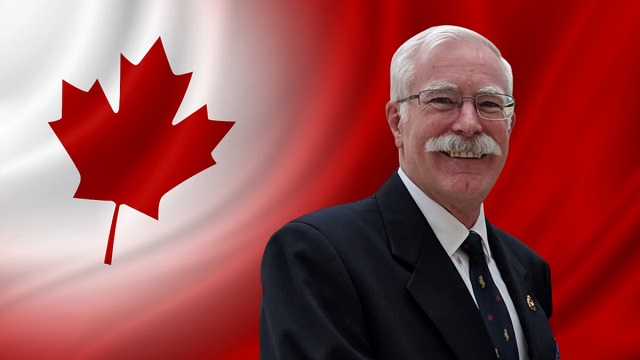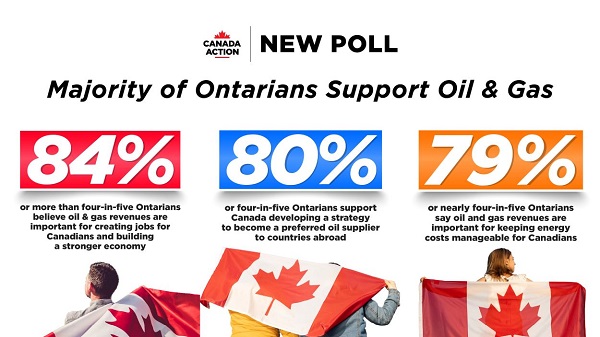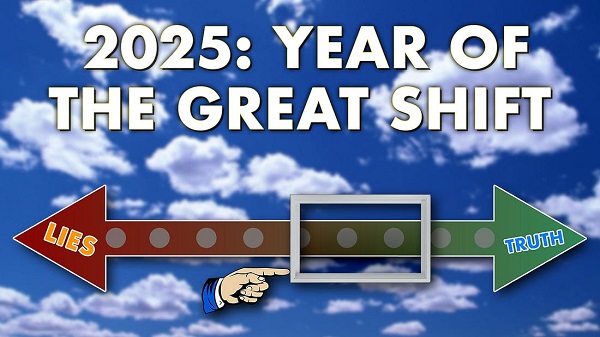Frontier Centre for Public Policy
Trudeau ‘finished what his father started’ driving Canada into failing freefall

From the Frontier Centre for Public Policy
In 2015 Prime Minister Justin Trudeau scorned Canada — a country that afforded him so much, yet to which he had contributed nothing of notable significance. His disdain for those on whose backs Canada was built was clear. History and European national origins had to be blotted out.
Canada was a “post-national” nation with “no core identity,” he arrogantly told the New York Times. The reckless socialist ideology he spat out was an omen of the division, fear and attack on so-called privileged (white) Canadians that hit like a storm. It hovers over us like a choking toxic cloud.
If Trudeau’s vision was a Canada “completely splintered,” with Quebec a nation unto itself “separate and distinct,” English-speaking provinces “fractured into oblivion” and breaking up our “common culture” — then mission accomplished.
“He’s finished what his father started,” said Lt. Col. Dave Redman (ret’d), who served 27 years with the Canadian Armed Forces and headed Alberta’s Emergency Management Agency.
The Trudeau concept of a post-national state is “dangerous and misleading.”
“It implies that democratically elected national governments are no longer relevant.”
Redman explained Canada’s “shifting socio-political landscape” with powerful clarity in Canada 2024: A Confident Resilient Nation or a Fearful Fracture Country? in the Frontier Centre for Public Policy.
Canadians know something has gone terribly wrong beyond mounting financial struggles and trampled rights. Our nation’s rife with “apologies and internal divisions,” said Redman.
“Confidence has been turned into fear and shame. Canada has become irrelevant on the world stage.”
Canada’s in a “failing” freefall.
“Why will no one invest economically in Canada? Why are people leaving Canada? Why are people not believing that Canada has a future? Why are our allies ignoring us and holding us in disdain? Because we are a threat to their national security because China can get to them through us.”
Canada’s at a “critical juncture.” Until politicians and Canadians unite with common values and defended borders —necessary for a successful nation — Canada will be “stumbling from one crisis to another.”
Until Canadians hold them to account, politicians will fixate on minor “wedge” issues — such as diversity, equity and inclusion (DEI) — to divert attention from critical national concerns they want us to ignore.
Convincing people to feel bad about themselves makes it easier to manipulate guilt and usher in destructive, ideological programs with obscene price tags.
Canada must foster national pride, prioritize national interests and protect national security to secure its future, said Redman.
“A nation is successful when a group of people live in one country with defended borders and share common values, even if they vary in cultures and languages.”
Redman’s six-point framework for national interests includes unity, national security, good governance, protection of rights and freedoms, economic prosperity and growth and personal and community well-being. He offers strategies on how to achieve these critical objectives.
“I believe the current sitting government truly does believe that the World Economic Forum’s concepts and ideals of post-national states is what Canada should be and they have started it.”
“I believe the current government of Canada is intentionally walking each of those six national interests away from Canada in a way that will allow Canada to become part of a broken world.”
It’s up to Canadians to decide what direction we head in.
“The reason I wrote this paper was to make people think about our country in a 20-to-25-year vision. And not let the current government which loves to use divisive, tactical issues to destroy the larger picture conversation. And in doing so, destroy our economy, destroy our unity, destroy our national security by focussing on tactical issues,” said Redman.
A vision for Canada involves citizens who are optimistic about the future, have self-respect to follow through on their ideas, and courage to stand up for their culture and ideals, he said.
Trudeau and his band of self-serving renegades unleashed an ideological curse on Canada.
But we let them.
Then COVID-19 demonstrated how quickly rights and freedoms “can be trampled on, eviscerated and dismissed.”
For a glorious moment in time Freedom Convoy truckers rejuvenated Canadian pride, united Canadians and emboldened us to fight for freedom. Peaceful protesters who waved the Canadian flag were punished.
Yet the silence is deafening as people who despise Canada’s core identity — yes, Trudeau, we have one — hijack our nation and our children’s future.
Redman points to “diaspora marching routinely in the streets of our cities supporting illegal terrorist organizations demanding the death of both citizens here and abroad.”
They wave flags but never the Maple Leaf. They support other countries “but do not march for Canada.”
“Unity is the core value for a country. A cultural unity is based on common shared ethics, values and beliefs. People wishing to become citizens of a country must understand these principles of belief and join the country because they wish for the same to be the foundation of their daily lives.”
“Many who come to a country, not wishing to join the cultural unity of that country, are enemies, intentional or otherwise, who work to erode or destroy this unity.”
Immigration is part of national security.
“You’re pouring people into our country who do not share our ethics and values. And you’re doing it intentionally. That will destroy unity and while it’s destroying unity it will destroy economic prosperity and growth.”
“Our police and courts take no action or in fact support these illegal acts.”
“Our current federal government, many of our provincial territorial governments and our municipal governments stand silently by, or in some cases support the destruction of our values, laws and national interests.”
Redman said the question is, what do Canadians want Canada to be? Will we stand up and root out infectious ideology? Is it too late?
“My paper is about how to overcome what’s happened. It’s happened, we can’t change that. But it’s how to get politicians and Canadians to change how they think about our country. And to have a process to put in place, a vision for our country and have elected officials explain what they see the vision to be. Canadians can make a choice between visions.”
Citizens, academia, public and private sector organizations, unions, religious and non-religious groups need to get involved to break down national interests into “clear and attainable objectives.”
Politicians must explain what unity and democracy means to them. That’s not happening.
Many Canadians are pinning hopes on Conservative Leader Pierre Poilievre forming the next federal government.
“My line to Poilievre is I understand his tactical four bullet plan you know that inflation’s up, the cost of living’s up, that housing’s bad and people need more money in their pocket.”
“I get it. He’s beating that drum over and over. But we’ve got a year before the election, he needs to start talking about his vision for Canada.”
Canada was once internationally respected, trusted and consulted. Now we are pitied by shocked outsiders witnessing woke ideology and crushed free speech forced upon us.
“We’ve been taught to be ashamed of our history instead of proud of it, or even to learn from it.”
“We have completely shattered democratic institutions. Our election system is in question. Our legislatures are in turmoil, our courts, our schools, our medical system. The mainstream media is completely partisan. Our economy is broken. People can’t meet bills at the end of the month and we’re ignored and shunned by our allies.”
Redman addressed good governance, offering guidelines on how to “strengthen and preserve the democratic way of life in Canada.”
“Good governance to me means defence of democracy, where in other countries it can mean absolute control of a totalitarian government.”
Redman’s suggestions to stop Canada from being completely “shattered” include a 100% immigration policy review; halting funding to universities that are “domestic threats” and removing Marxists professors; establishing a monitored election process; and ending government-funded media.
Agencies that counter external threats must be “equipped to work individually and cooperatively, with each other and our allies.”
Stop foreign aid that counters our interests and national security.
“While Canadians are challenged to put food on the table and to have a house, they watch as the federal government sends hundreds of millions of dollars to international organizations and specific countries that do not share our democratic aims or our national interests.”
There must be “a wall of people hitting” politicians telling them to listen or face defeat.
“In 25 years will Canada be a democracy? Or will it become a country led by an authoritarian government that uses fear and threats to remove imaginary risks from the daily lives of Canadians who have lost their self-respect and courage?”
Look at what eight years did.
First published here.
Linda Slobodian is the Senior Manitoba Columnist for the Western Standard based out of Winnipeg. She has been an investigative columnist for the Calgary Herald, Calgary Sun, Edmonton Sun, and Alberta Report.
Frontier Centre for Public Policy
Tent Cities Were Rare Five Years Ago. Now They’re Everywhere

From the Frontier Centre for Public Policy
Canada’s homelessness crisis has intensified dramatically, with about 60,000 people homeless this Christmas and chronic homelessness becoming entrenched as shelters overflow and encampments spread. Policy failures in immigration, housing, monetary policy, shelters, harm reduction, and Indigenous governance have driven the crisis. Only reversing these policies can meaningfully address it.
Encampments that were meant to be temporary have become a permanent feature in our communities
As Canadians settle in for the holiday season, 60,000 people across this country will spend Christmas night in a tent, a doorway, or a shelter bed intended to be temporary. Some will have been there for months, perhaps years. The number has quadrupled in six years.
In October 2024, enumerators in 74 Canadian communities conducted the most comprehensive count of homelessness this country has attempted. They found 17,088 people sleeping without shelter on a single autumn night, and 4,982 of them living in encampments. The count excluded Quebec entirely. The real number is certainly higher.
In Ontario alone, homelessness increased 51 per cent between 2016 and 2024. Chronic homelessness has tripled. For the first time, more than half of all homelessness in that province is chronic. People are no longer moving through the system. They are becoming permanent fixtures within it.
Toronto’s homeless population more than doubled between April 2021 and October 2024, from 7,300 to 15,418. Tents now appear in places that were never seen a decade ago. The city has 9,594 people using its shelter system on any given night, yet 158 are turned away each evening because no beds are available.
Calgary recorded 436 homeless deaths in 2023, nearly double the previous year. The Ontario report projects that without significant policy changes, between 165,000 and 294,000 people could experience homelessness annually in that province alone by 2035.
The federal government announced in September 2024 that it would allocate $250 million over two years to address encampments. Ontario received $88 million for ten municipalities. The Association of Municipalities of Ontario calculated that ending chronic homelessness in their province would require $11 billion over ten years. The federal contribution represents less than one per cent of what is needed.
Yet the same federal government found $50 billion for automotive subsidies and battery plants. They borrow tonnes of money to help foreign car manufacturers with EVs, while tens of thousands are homeless. But money alone does not solve problems. Pouring billions into a bureaucratic system that has failed spectacularly without addressing the policies that created the crisis would be useless.
Five years ago, tent cities were virtually unknown in most Canadian communities. Recent policy choices fuelled it, and different choices can help unmake it.
Start with immigration policy. The federal government increased annual targets to over 500,000 without ensuring housing capacity existed. Between 2021 and 2024, refugees and asylum seekers experiencing chronic homelessness increased by 475 per cent. These are people invited to Canada under federal policy, then abandoned to municipal shelter systems already at capacity.
Then there is monetary policy. Pandemic spending drove inflation, which made housing unaffordable. Housing supply remains constrained by policy. Development charges, zoning restrictions, and approval processes spanning years prevent construction at the required scale. Municipal governments layer fees onto new developments, making projects uneconomical.
Shelter policy itself has become counterproductive. The average shelter stay increased from 39 days in 2015 to 56 days in 2022. There are no time limits, no requirements, no expectations. Meanwhile, restrictive rules around curfews, visitors, and pets drive 85 per cent of homeless people to avoid shelters entirely, preferring tents to institutional control.
The expansion of harm reduction programs has substituted enabling for treatment. Safe supply initiatives provide drugs to addicts without requiring participation in recovery programs. Sixty-one per cent cite substance use issues, yet the policy response is to make drug use safer rather than to make sobriety achievable. Treatment programs with accountability would serve dignity far better than an endless supply of free drugs.
Indigenous people account for 44.6 per cent of those experiencing chronic homelessness in Northern Ontario despite comprising less than three per cent of the general population. This overrepresentation is exacerbated by policies that fail to recognize Indigenous governance and self-determination as essential. Billions allocated to Indigenous communities are never scrutinized.
The question Canadians might ask this winter is whether charity can substitute for competent policy. The answer is empirically clear: it cannot. What is required before any meaningful solutions is a reversal of the policies that broke it.
Marco Navarro-Genie is vice-president of research at the Frontier Centre for Public Policy and co-author with Barry Cooper of Canada’s COVID: The Story of a Pandemic Moral Panic (2023).
Agriculture
The Climate Argument Against Livestock Doesn’t Add Up

From the Frontier Centre for Public Policy
Livestock contribute far less to emissions than activists claim, and eliminating them would weaken nutrition, resilience and food security
The war on livestock pushed by Net Zero ideologues is not environmental science; it’s a dangerous, misguided campaign that threatens global food security.
The priests of Net Zero 2050 have declared war on the cow, the pig and the chicken. From glass towers in London, Brussels and Ottawa, they argue that cutting animal protein, shrinking herds and pushing people toward lentils and lab-grown alternatives will save the climate from a steer’s burp.
This is not science. It is an urban belief that billions of people can be pushed toward a diet promoted by some policymakers who have never worked a field or heard a rooster at dawn. Eliminating or sharply reducing livestock would destabilize food systems and increase global hunger. In Canada, livestock account for about three per cent of total greenhouse gas emissions, according to Environment and Climate Change Canada.
Activists speak as if livestock suddenly appeared in the last century, belching fossil carbon into the air. In reality, the relationship between humans and the animals we raise is older than agriculture. It is part of how our species developed.
Two million years ago, early humans ate meat and marrow, mastered fire and developed larger brains. The expensive-tissue hypothesis, a theory that explains how early humans traded gut size for brain growth, is not ideology; it is basic anthropology. Animal fat and protein helped build the human brain and the societies that followed.
Domestication deepened that relationship. When humans raised cattle, sheep, pigs and chickens, we created a long partnership that shaped both species. Wolves became dogs. Aurochs, the wild ancestors of modern cattle, became domesticated animals. Junglefowl became chickens that could lay eggs reliably. These animals lived with us because it increased their chances of survival.
In return, they received protection, veterinary care and steady food during drought and winter. More than 70,000 Canadian farms raise cattle, hogs, poultry or sheep, supporting hundreds of thousands of jobs across the supply chain.
Livestock also protected people from climate extremes. When crops failed, grasslands still produced forage, and herds converted that into food. During the Little Ice Age, millions in Europe starved because grain crops collapsed. Pastoral communities, which lived from herding livestock rather than crops, survived because their herds could still graze. Removing livestock would offer little climate benefit, yet it would eliminate one of humanity’s most reliable protections against environmental shocks.
Today, a Maasai child in Kenya or northern Tanzania drinking milk from a cow grazing on dry land has a steadier food source than a vegan in a Berlin apartment relying on global shipping. Modern genetics and nutrition have pushed this relationship further. For the first time, the poorest billion people have access to complete protein and key nutrients such as iron, zinc, B12 and retinol, a form of vitamin A, that plants cannot supply without industrial processing or fortification. Canada also imports significant volumes of soy-based and other plant-protein products, making many urban vegan diets more dependent on long-distance supply chains than people assume. The war on livestock is not a war on carbon; it is a war on the most successful anti-poverty tool ever created.
And what about the animals? Remove humans tomorrow and most commercial chickens would die of exposure, merino sheep would overheat under their own wool and dairy cattle would suffer from untreated mastitis (a bacterial infection of the udder). These species are fully domesticated. Without us, they would disappear.
Net Zero 2050 is a climate target adopted by federal and provincial governments, but debates continue over whether it requires reducing livestock herds or simply improving farm practices. Net Zero advocates look at a pasture and see methane. Farmers see land producing food from nothing more than sunlight, rain and grass.
So the question is not technical. It is about how we see ourselves. Does the Net Zero vision treat humans as part of the natural world, or as a threat that must be contained by forcing diets and erasing long-standing food systems? Eliminating livestock sends the message that human presence itself is an environmental problem, not a participant in a functioning ecosystem.
The cow is not the enemy of the planet. Pasture is not a problem to fix. It is a solution our ancestors discovered long before anyone used the word “sustainable.” We abandon it at our peril and at theirs.
Dr. Joseph Fournier is a senior fellow at the Frontier Centre for Public Policy. An accomplished scientist and former energy executive, he holds graduate training in chemical physics and has written more than 100 articles on energy, environment and climate science.
-

 Censorship Industrial Complex6 hours ago
Censorship Industrial Complex6 hours agoUS Under Secretary of State Slams UK and EU Over Online Speech Regulation, Announces Release of Files on Past Censorship Efforts
-

 Business9 hours ago
Business9 hours ago“Magnitude cannot be overstated”: Minnesota aid scam may reach $9 billion
-

 Alberta1 day ago
Alberta1 day agoAlberta project would be “the biggest carbon capture and storage project in the world”
-

 Energy1 day ago
Energy1 day agoNew Poll Shows Ontarians See Oil & Gas as Key to Jobs, Economy, and Trade
-

 Daily Caller23 hours ago
Daily Caller23 hours agoIs Ukraine Peace Deal Doomed Before Zelenskyy And Trump Even Meet At Mar-A-Lago?
-

 Alberta2 days ago
Alberta2 days agoAlberta Next Panel calls for less Ottawa—and it could pay off
-

 Energy2 days ago
Energy2 days agoWhile Western Nations Cling to Energy Transition, Pragmatic Nations Produce Energy and Wealth
-

 Business8 hours ago
Business8 hours agoLargest fraud in US history? Independent Journalist visits numerous daycare centres with no children, revealing massive scam









